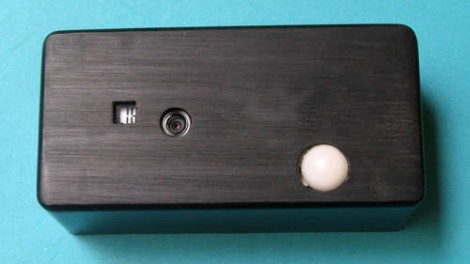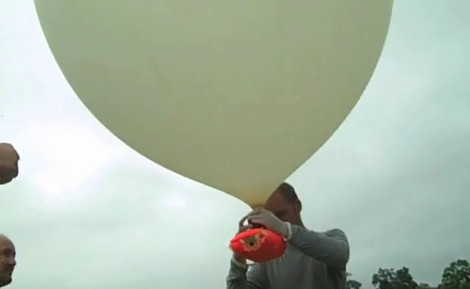Now you can capture pictures of our furry friends by building a motion activated wildlife camera. [Doug Paradis] took his Air Freshener hack and used it to trigger a camera. The white dome in the picture above is the PIR sensor from an Air Wick Freshmatic, along with a cheap keychain camera and an MSP430 microcontroller. He used one of the chips that came with the TI Launchpad, a transistor, and some discreet components to interface the devices and then put them into a project box. Now he’s got a fully configurable motion-sensing camera.
camera579 Articles
Retro Adapter For Canon SLR

[calculon] was able to modify a “dumb” adapter to allow his Canon SLR to use the aperture and focus on a retro lens. With his new flip mounted wide angle lens he was able to achieve some pretty neat macro shots. By cutting away some of the cheaper ring he was able to feed the wire through and glue it onto the the cameras contact points. The wire was then attached to the inputs on the “new” lens. With a new adapter running about $375 not only was this a neat little hack but it was also a money saver. You can see some more of his photos on his flicker
Portal…shirt?
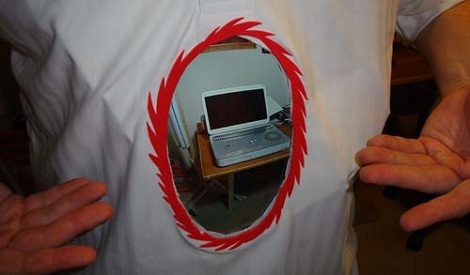
[Ben Heck] is in the Halloween spirit with his Portal inspired “see through” t-shirt. That is, a thin lcd is mounted on [Ben’s] chest, with a not as thin camera mounted on his back; when the system is running, everything behind him is captured by the camera and displayed on the LCD. The concept isn’t exactly new by any means, often by the name of “gaping holes” or “hole through body” or more, but the project goes to show that a creative costume isn’t always the most elaborate, expensive, or even a new idea. Catch a video of how to make your own Portal shirt, after the jump. Oh, and you can win the Portal shirt here.
[via The Daily What]
Machining An SLR Camera From Scratch
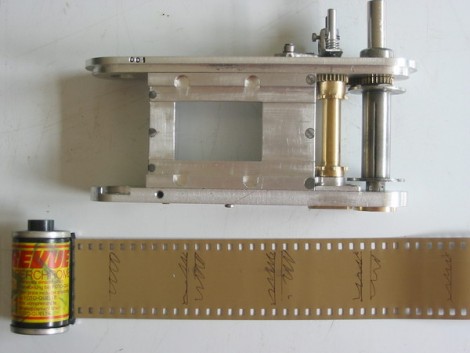
It took us a while to stop drooling long enough to write about this amazing machining project. [Denis MO] made a single-lens reflex camera from scratch. The banner image above is not the finished product, but just one step in the production chain. [Denis] has been thinking about doing this project for 25 years and finally took the plunge. From the start, the only parts he planned on NOT making himself were the screws, ball bearings, shutter, curtain fabric, and interchangeable lenses. Everything else is his own creation based off of his own design. Spend some time looking over his project. There’s plenty of information and images of both the machining process, and the drawings he mocked up in the design process. We’ve also included a pic of the finished camera and the contact sheet from his test roll of film after the break.
Window Curtain Moves To Screen Pedestrians
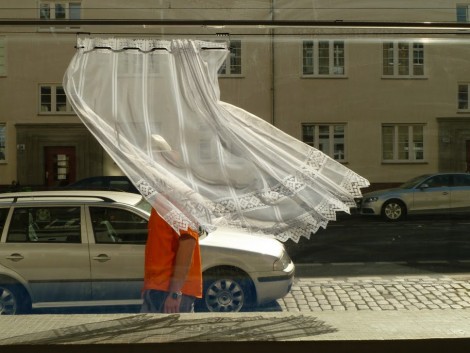
[Niklas Roy] built a motorized window curtain to screen out foot traffic in front of his window. When you hear “motorized curtain” you may think that this will move up and down but it doesn’t. Instead, the small curtain move horizontally to cover passersby as they travel down the sidewalk. This is accomplished using a camera in conjunction with some motion sensing software. In the video after the break you can see that the software also anticipates the movement, and ends up doing a good job of keeping the target covered. That’s thanks to the Processing sketch working in conjunction with a rotary encoder on the hardware setup. Details for both are available on the page linked above.
This harkens to other community involvement hacks we’ve seen like the subway stair piano, or the bottle recycling video game. It’s fun and quirky, which is not too much of a surprise as we saw a glimpse of that when we looked at [Niklas’] public fountain hydropower generator.
Continue reading “Window Curtain Moves To Screen Pedestrians”
Yashica Electro Shutter Mod
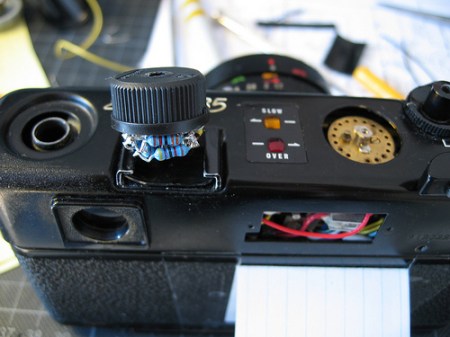
We saw this picture on Flickr this morning and started getting really curious. The caption says that [Steffanhh1] modified the Yashica Electro Shutter camera to be fully manual. We’re not camera experts so we had to do a little research to see what was going on here. The Yashika Electro got its name due to how the shutter speed is controlled. You have two little LEDs that light up depending on which direction you need to turn the dial (based on ambient light?). [Steffanhh1] really wanted full control, so they hacked in a dial with a knot of resistors under it. The first test photographs are downloading developing, so we’ll have to wait to see the results.
A Ride Into Space, But Nothing Fancy
[Luke Geissbuhler] wanted to send something into space, a fun project his kids could get in on too. Instead of sending up a suite of electronic components they went with consumer electronics. The key element, an HD camera to record the event, is protected by a styrofoam shell and soft foam padding. To help ensure that the device was recovered an iPhone also made the trip, running a GPS tracking program that continuously updated the package’s location. To combat the ill-effects of severe cold some chemical hand warming packs also joined the flight.
As you can see after the break, it was a success. The camera documented an incredible ride, with a balloon rupture at 19 miles above the earth (that must be a calculated height as there’s no altimeter in the package). The pod came down gently thanks to a parachute and was recovered just 30 miles from where it launched.

